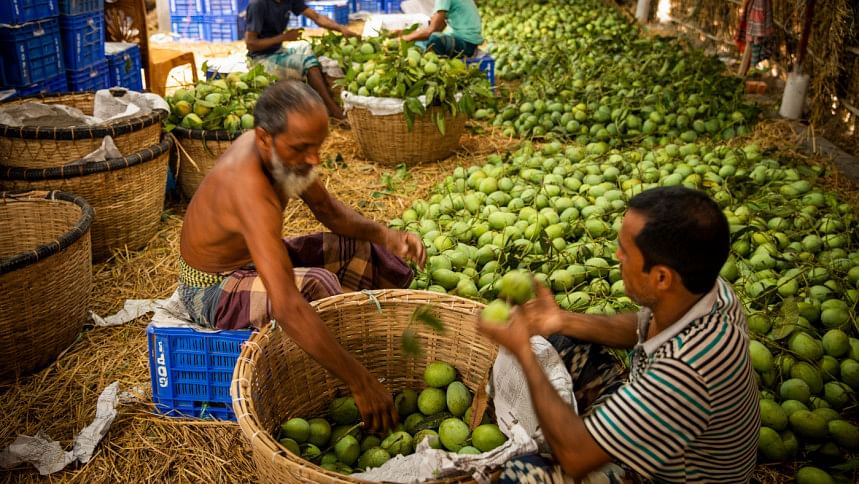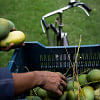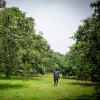Sights and sounds of Chapai Nawabganj: the mango capital of Bangladesh

It is not that the claim of being the mango capital goes undisputed, especially in recent times, with places like Naogaon seriously contending and challenging its position. But arguably, Chapai Nawabganj has still managed to hold its fort, and for good reasons.
To start with, let's be clear that it's not Rajshahi we are talking about. Chapai Nawabganj indeed falls under the Rajshahi division, but the people of the mango capital have made a clear distinction between the two — the mango pride of Chapai Nawabganj is solely theirs alone, as it becomes apparent when you experience its sights and sounds.
Even though mango hubs are common in Rajshahi city, and you may come across some orchards in and around, and despite that, there is the Aam Chattar which is a large mango sculpture, it doesn't beat Chapai Nawabganj.
After all, Chapai Nawabganj hosts the most iconic mango market in Bangladesh, the Kansat mango bazaar.
And so, last week, we (a team of journalists, but even more so, a group of mango maniacs if put bluntly) flocked to Chapai Nawabganj, to see for ourselves what makes it the mecca for mangoes.

Quite soon after our car left Rajshahi and got into the highway, I realised that the bazaar is like the nucleus if Chapai Nawabganj was to be an atom, around which numerous hubs, businesses, orchards operate.
Miles after miles of mango gardens lie on both sides of the highway under the scorching Chapai Nawabganj sun. The villages are lush with these orchards.
But during this time of year, the weather is merciless. The humidity will make you desperately yearn for a cold shower. God knows how many litres of water we all drank!
But the bash of heat that attacked us when we got off the car was totally worth it for the mango gardens. The sheer sight of the fruits adorning the trees gave hope. "A treat awaits," I thought.
Right there, under tree shades, we ate like there's no tomorrow. "Mangoes are God's way of compensating for the Chapai Nawabganj weather," I mused, as I peeled off and bit into a mango.
The farmers talked of the huge variety that is available in their region, of all the hard work they do for the mango trade. Conversations spiralled.
"The heavy rains have destroyed a lot of the mangoes this year," said one. "Prices are good this time around," someone else commented. "My skin is burnt for the sake of mangoes," said another, pulling up his sleeve to show their 'real' colour underneath.
One thing that comes off clearly is the pride: "the heat and the overall geography are unparalleled here at Chapai Nawabganj... the variety and taste of the mangoes we have is unmatched... the old trees bear witness that we have been doing this for the longest time... when people think of the finest mangoes, the first place that comes to their minds is Chapai Nawabganj, others are still new in the game."
A taunt at Naogaon and an air of superiority are thrown in here and there.
I listened, admittedly half-heartedly, as I kept on gulping one mango after another. We needed the sugar rush. We needed the juicy delightful fruit to save our souls from the sweltering heat.
But amidst all that, one remark by a mango trader struck me the most. "The people here wait for this time of year with a lot of anticipation. Be it a family planning, a wedding, or if a household is looking to buy furniture or repair their house, a lot depends on how well we do in the mango season," he said.
It is fascinating to realise how the livelihoods and hopes and dreams of an entire region largely depend on one thing: mango.
Therefore, it is no surprise that no matter where you are in Chapai Nawabganj, you are not far off from mangoes or mango-related activities.
Warehouses get busy weighing, storing, loading, and unloading. Vans carry crates and traditional bamboo baskets to the market.
Kansat market is of course the place to be. It is the melting pot of the mango trade, where retailers and businesses flock from all over Bangladesh, with some traders even staying in at Chapai Nawabganj during the busiest times of the season.
The people at Chapai Nawabganj spend the busiest time. So much so, in some villages, you will find households where women make aam shokto, which are then collected by businesses nearby.
During mango season, the entire Chapai Nawabganj rises up to the occasion!

 For all latest news, follow The Daily Star's Google News channel.
For all latest news, follow The Daily Star's Google News channel. 







Comments